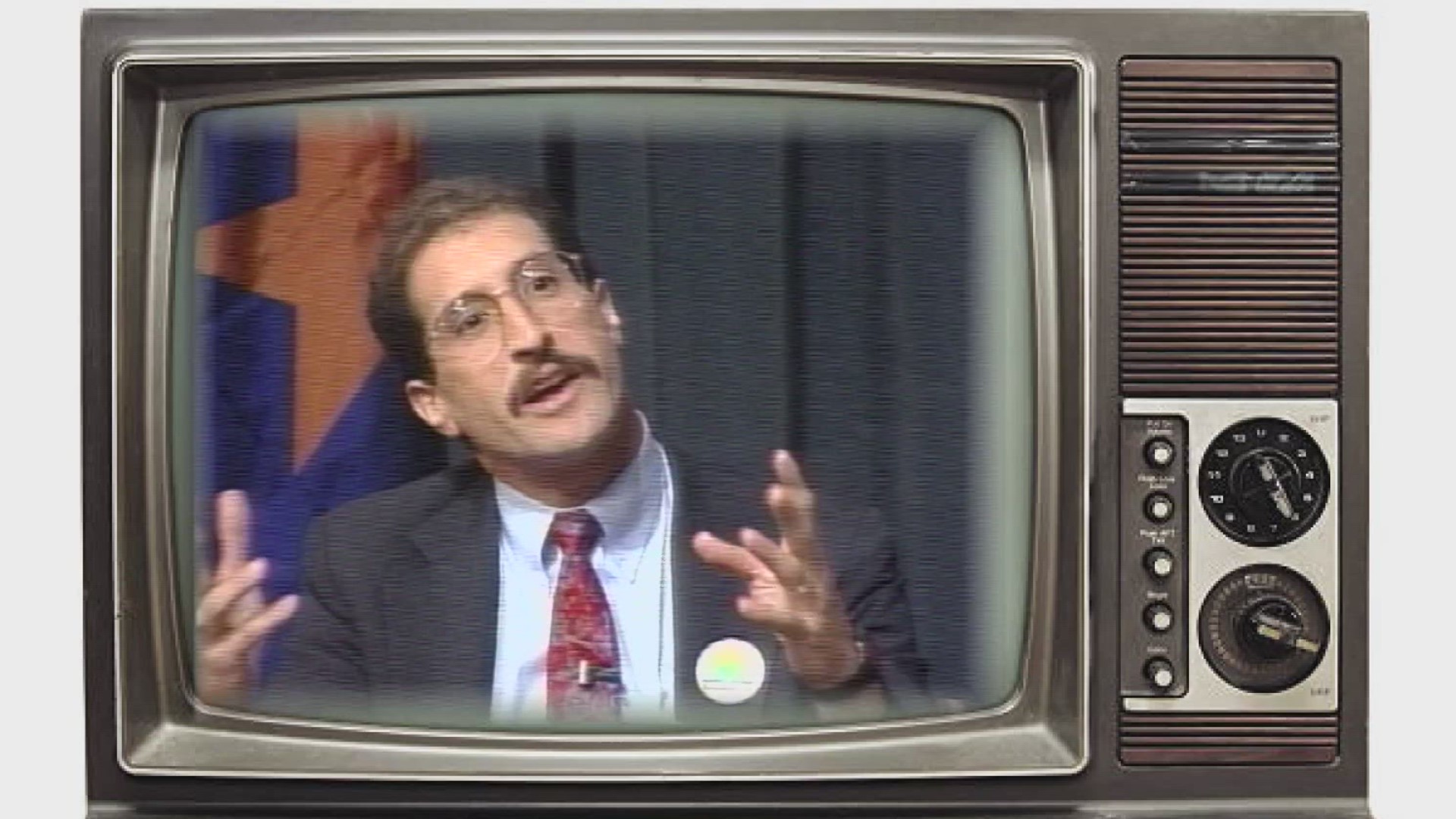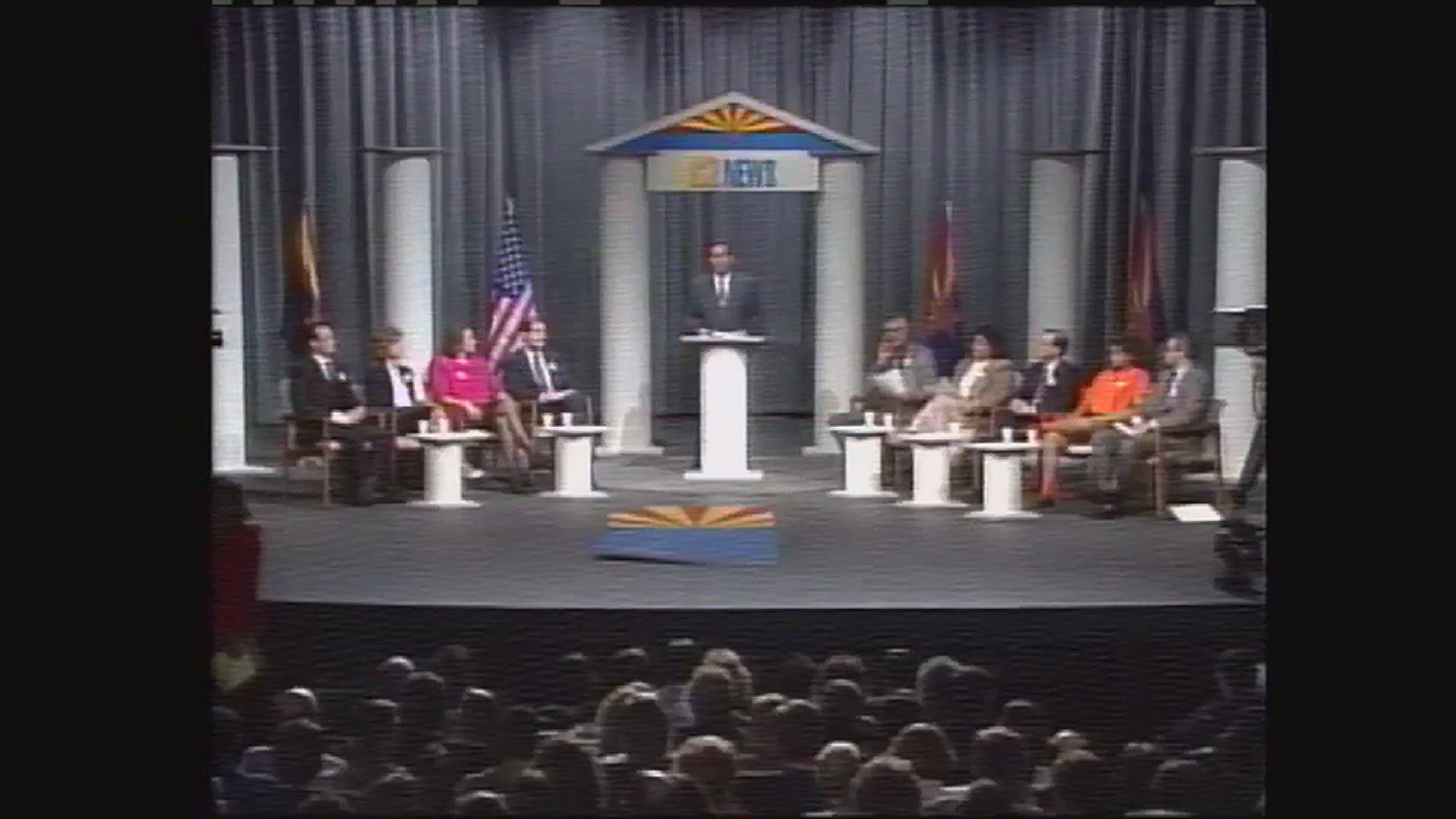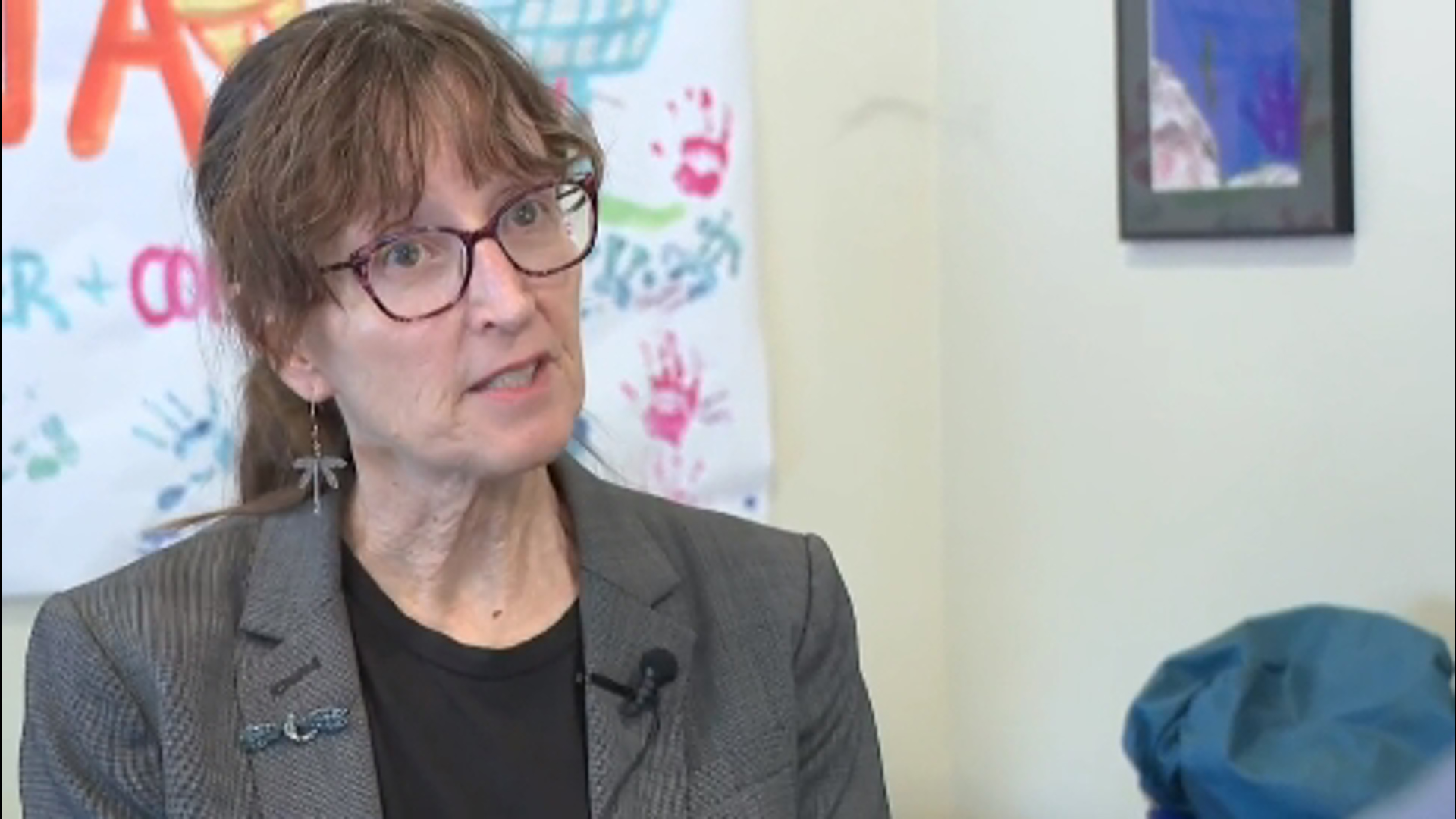PHOENIX — At a 12News “Earthwatch” Town Hall in 1992, David Baron of the Arizona Center for Law in the Public Interest said, “We’ve done our best to botch up this state.”
In retrospect, the 90-minute town hall puts into perspective issues that persist, have worsened, or in some cases, improved dramatically.
Victories include the growing hole in the ozone layer that was a major concern in 1992 and is now on track to recover, thanks to global cooperation against ozone-depleting chemicals.
Species that once vanished from regions in the Southwest have returned. Many Arizona waterways considered too contaminated to fish in 1992 are now considered healthy.
But chronic problems with pollution, water and fossil fuels remain.
Here are three Big Topics Discussed during a 90-minute town hall that featured lawmakers, business leaders, environmental advocates, and audience members in 1992.
WATCH: Kent Dana, Republican Lawmaker Stand Barnes & Environmentalist Dennis Weaver discuss the U.S. responsibility to clean up and reduce fossil fuel pollution.
WATER: What they said in 1992
Although water was a major discussion topic, pollution, not water scarcity, dominated the forum.
The state’s ongoing struggles to fully comply with the Clean Water Act of 1972 was a tense source of debate.
An Arizona Chamber of Commerce representative expressed concern about property owners being blamed for the actions of previous tenants. Environmental advocates pointed to studies of contaminated groundwater wells, aquifers and lakes.
“I’m critically worried about the probability that our children and grandchildren will be able to farm where their grandparents have farmed,” said one farmer, speaking about contaminated water and the dwindling amount of clean water.
“We’ve pumped areas dry,” said one panel member.
Pesticide pollution was a major concern and the EPA was still catching up to regulate industrial and home pesticides.
The Arizona Department of Environmental Quality director complained that the state was not adequately funding the agency to enforce water and pollution regulations.
“We have a problem keeping career employees at the Department of Environmental Quality. It pays 40% less than the private sector for comparable jobs and 20% less than other government agency jobs,” said Ed Fox, the agency’s director at the time.
What we know today
According to the U.S. Government Accountability Office, since 1972, significant improvements have been made nationwide to waterways, aquifers and lakes but “threats to water safety remain.”
Since the ’90s, Arizona has also found innovative ways to conserve water, despite an exploding population. But a mega-drought now 22 years in the making, fueled by climate change, is forcing water managers in 2023 to cut back allocations to cities.
There are also signs that staffing levels in government remain an issue.
For example, an August investigation by The Arizona Republic concluded that as of last summer, there were nearly 40% fewer people working for the ADWR compared to the peak year in 2009.
A 2021 Arizona Auditor General’s Report found ADEQ lacked testing standards, stating, “The Department (had) not developed required (standards) for eight contaminants… to help ensure that the water in aquifers is safe and protected….”
The department was “out of compliance for 7-29 years,” according to the report.
In response, ADEQ tells 12 News this week they’ve made “significant progress” addressing the report’s four recommendations.
“It’s important to understand that full implementation of the actions to address the recommendations requires data collection to establish trends and conduct scientific analysis and, in some cases, a formal rulemaking and public participation process will be needed,” said Caroline E. Oppleman, communications director for ADEQ.
A follow-up Auditor General’s report in 2022 acknowledged ADEQ has completed many of the recommended actions. It found ADEQ is on pace to have at least five of eight standards in place by June 2024. It also stated ADEQ obtained needed resources from the legislature to conduct ambient groundwater and agricultural pesticide monitoring.
“ADEQ is committed to continuing our work to fully address the Auditor General’s findings,” Oppleman said.
AIR QUALITY: What they said in 1992
The state and the country were adapting to Clean Air Act Amendments of 1990.
Health advocates lamented the “brown cloud” that hung over the Valley and cited “substantial evidence” that air pollution was making Valley residents sicker, causing premature death, and impacting asthma patients.
A representative of the Sierra Club said the Bush administration lost the opportunity to push for solar and wind technologies after the first Gulf War exposed the United States’ reliance on foreign oil.
“We’ve got to get rid of fossil fuels,” the panel member said.
Jerry Spellman of the Arizona Lung Association gave this bleak prediction about Arizona's air quality: “The history of Arizona, of Maricopa County, and of other cities across this country complying with air quality regulations is a terrible history. I don’t see any real hope for the future.”
What we know today
Asked about Spellman’s comments made in 1992, a representative of the American Lung Association (which has since merged with the Arizona Lung Association) was optimistic.
“I think Jerry would be proud of the work that we have done so far. Locally there are now investments in clean school buses, for example. But I think he would still be concerned. There is a lot of work to do,” said Melissa Ramos of the American Lung Association.
Today Maricopa County remains the seventh worse in the country among the most polluted communities in terms of ozone, according to the American Lung Association.
The Phoenix area gets an “F” grade for 24-hour particle pollution and a “passing” grade for annual particle pollution.
“This goes to show there is incredible progress we can make so all residents can breathe clean and healthy air,” said Ramos.
Ramos commended Governor Katie Hobbs for creating the Office of Resiliency to apply newly released federal funds for climate purposes. Ramos applauded recent local investments by the City of Phoenix into zero-emissions technology and charging infrastructure.
However, long-term climate trends are posing a challenge to governments.
“We need to understand that climate change is happening. We’re seeing more droughts, more wildfires. All these climate events are making it increasingly difficult to protect our air quality,” Ramos said.
Surveys over three years show a large majority of Arizonans support a transition away from fossil fuels and moving towards investments in wind and solar energy sources, Ramos said.
WATCH: Sandy Bahr of the Sierra Club Grand Canyon Chapter discusses progress made between 1992 and today on wildlife, fossil fuels, and more.
Superfund Sites: What they said in 1992
Another major worry discussed during the town hall was the amount of properties contaminated by decades of polluting companies that disposed hazardous waste into soil and groundwater. They were designated as superfund sites by the federal government.
Fox spoke with urgency. “We need to pay to take control of it today or it will be a whole lot more to clean up. It makes more sense to take care of it today,” he said.
The EPA acknowledged it was still working to allocate funds for the sites.
What we know today
Today there are ten priority superfund sites.
“We’ve made some improvements but not nearly enough and not nearly fast enough,” said Sandy Bahr of the Sierra Club Grand Canyon Chapter. “It takes a long time when you don’t put the dollars into it.”
Up to Speed
Catch up on the latest news and stories on the 12News YouTube channel. Subscribe today.



